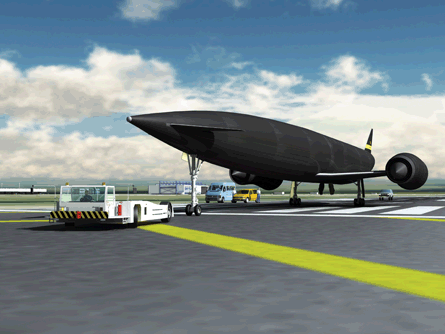Engine technology may be key to realising the Skylon space plane, but its airframe is also critical, and possibly just as ambitious. The 87m (285ft) long design, with 25m wingspan, calls for fuselage and wing load bearing structures made of carbon fibre reinforced plastic with an external shell of a fibre-reinforced ceramic that carries only aerodynamic pressure loads transmitted to the fuselage structure through flexible suspension points.
The shell, only 0.5mm thick and corrugated for stiffness, is free to move under thermal expansion, especially during the latter stages of the aerodynamic ascent and re-entry. Revolutionary materials and structures include silicon carbide reinforced glass ceramics and silicon carbide reinforced titanium struts.
 |
|---|
© Reaction Engines |
Reaction Engines' lead designers, Alan Bond and Richard Varvill, note with pride that their Skylon design has now had its re-entry aerothermodynamics modelled and tested using computational fluid dynamics by DLR, the German space agency. The modelling, they claim, proves the craft can re-enter, though it may need cooling along the hotter parts of its angular design.
So different is the Skylon shape compared to its blunter predecessors - NASA's Space Shuttle and the Soviet Buran - that Bond goes so far as to claim the DLR re-entry studies "have shown the hypersonic aerodynamics textbooks need to be rewritten".
Source: Flight International
















